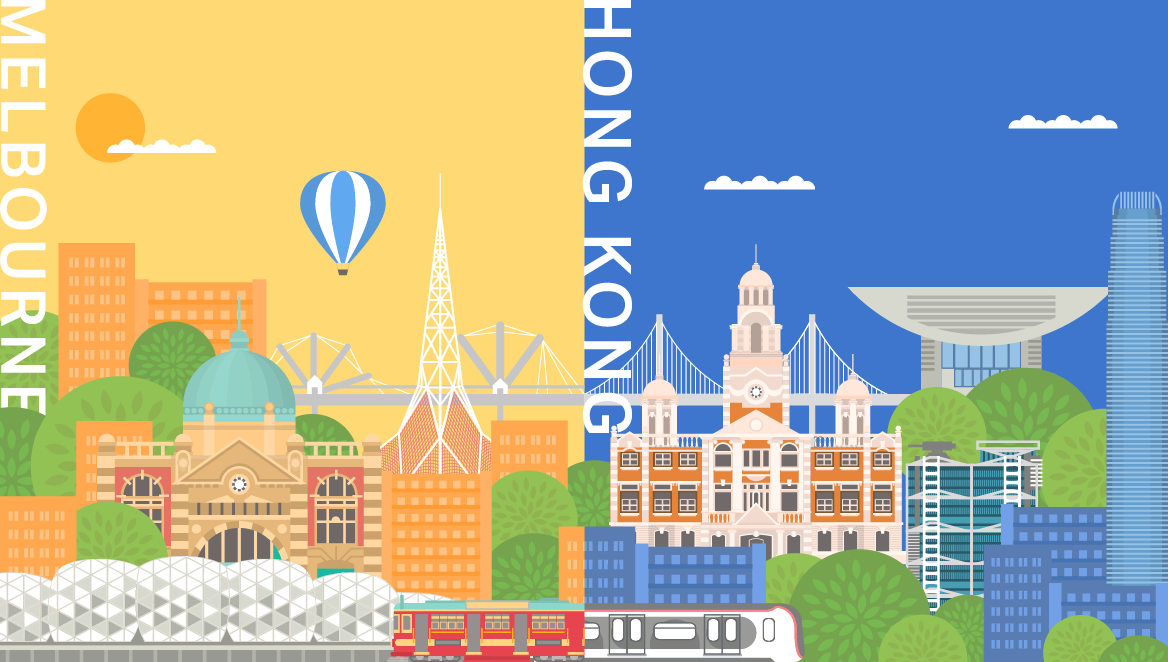DMatters May 2018 Issue

Pepping up our city: Lessons from Melbourne in making cities liveable
At the turn of the century, our world is greeted by a stream of game-changing innovations that have been constantly redefining urban life. In this era of change, the concept of liveability is taking root fast both internationally and locally, attracting more to ponder what makes a city liveable. Liveability encompasses many desirable features of a city, such as facilitated human interactions, well-designed urban space, efficient transportation, and comprehensive healthcare for all. One of the most recognized tallies is the Economist Intelligence Unit’s (EIU) Global Liveability Survey, which measures city liveability in five parameters: stability, healthcare, culture and environment, education, as well as infrastructure. Among the 140 ranked cities, Melbourne is topping the chart for a whopping seven years in a row. What’s the secret formula behind Melbourne’s astounding feat?
Melbourne is famous for its cultural vibe and arty streetscape, but there’s more to that in its path to the world’s most liveable city. Sauntering in the city centre, you will be amazed by its efficient and affordable urban tram network, the largest of its kind in the world. The delightfully walkable car-free zones keep pedestrians safe from roaring traffic. Melbourne is also a perfect place for cafe-hopping. The back alleys lined with cozy coffee shops are an organic development arising out of Melbourne’s planned ultra-wide streets. It feels safe to hang out in laneways where you are covered by people’s watch. From there, we see how strategic urban planning can make a difference to the lifestyle of city dwellers.
Melbourne does not only score high for its transportation and urban environment, but also healthcare and infrastructure. Melburnians enjoy the Australian healthcare system, which ranks the second among eleven developed countries. The city also houses some of the most prestigious museums and cultural events in the country, as well as world-class sports venues, which won the city the title of World’s Sporting Capital in 2016.
Design has contributed significantly to the liveable qualities Melbourne boasts. Professor Rob Adams, Director of City Design in Melbourne, has put forward the idea of “urban choreography” in explaining the city’s transformation since the 1980s. He is one of the key figures behind Melbourne’s changeover from a doughnut city with a desolate city center to the world’s most liveable city today.
Just like choreographing a dance performance, urban planning is not about micromanaging each and every move of individual stakeholders, i.e. the dancers. Instead, it is “a practice of framing, shepherding, enabling and constraining.” With a bold vision, creativity, clarity and framework, the role of design is to empathise, empower and facilitate the stakeholders to express and improvise in everyday life, and most importantly, creating desirable but actionable changes. “While most change is incremental, in aggregate it is transformational,” he believes.
Renowned Danish architect Jan Gehl was another mastermind behind the city’s transformation, which he calls the Melbourne miracle. He conducted a public life survey for the city in early 1990s. The results and recommendations were instrumental to Melbourne’s transformation. Here we see how an insightful understanding of a city’s existing assets and qualities — which corresponds to the problem identification phase in design thinking — plays out in identifying the issues at stake and future opportunities, paving the way for creating innovative solutions for a city. Gehl’s human-oriented urban planning approach has transformed Melbourne’s once deserted city centre into a vibrant splash of activities, which is now relished by Melburnians.
So is there anything Hong Kong can learn from Melbourne? At this year’s Knowledge of Design Week (KODW), Jill Garner - Victorian Government Architect, the strategic lead of Melbourne’s architecture and urban design - will share with us the Australian way to liveability. Hong Kong has a lot of potential that is yet to be explored. With design-driven vision and strategies, for example, our districts can be turned into creative precincts; our historical buildings can be remodelled into tasteful cultural venues; our public space can become more inclusive for community exchange; and our open business environment is perfect for cross-sector collaboration and innovation. Learning not just the face value but the principles and ethos of the Melbourne miracle will inspire us to design and work out Hong Kong’s unique liveable qualities. Melbourne will also be our partner city at the upcoming Business of Design Week (BODW) scheduled for December, so definitely stay tuned!
In this issue of DMatters, we will get a sneak peak at KODW’s Forum 1 “Vision for Future Cities”. Up next is a cover on the DFA Hong Kong Young Design Talent Award, which is now open for application. In the final article, we will also learn more about how Fashion Incubation Programme incubatees stunned the red carpet at the 37th Hong Kong Film Award.
Let’s co-design our city to be a better place to live, work and play.
Further Reading:
More about Knowledge of Design Week (KODW) 2018 “Design for Liveability”
On Melbourne’s Urban Remake
https://theconversation.com/how-a-three-decade-remaking-of-the-city-revived-the-buzz-of-marvellous-melbourne-91481
https://www.foreground.com.au/planning/melbourne-rob-adams-kim-dovey/
Click here for DMatters (May) full issue.